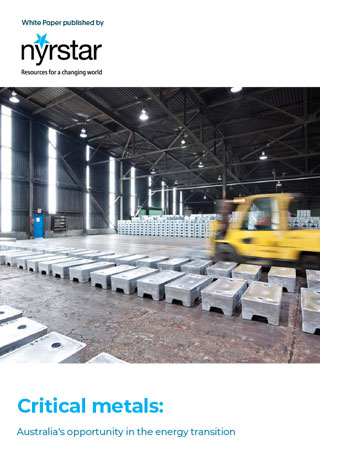When it comes to thinking about ‘critical’ or ‘strategic’ metals the focus is usually on nickel, lithium and other battery materials. Industrial metals such as aluminium, copper and zinc are often overlooked in the conversation about the energy transition.
We think this needs to change: electric vehicles alone are not going to stop global warming but coupled with a huge increase in renewable power they might. Electrification is among the most impactful things we can do to reduce greenhouse gas emissions (GHG) and meet the goals of the Paris Agreement on climate change. Decarbonising the grid also has other benefits, such as improving security and diversity of energy supply, issues that are taking on increased importance as geopolitical tensions continue to rise.
Of course, a renewable energy revolution will not happen without a huge increase in wind and solar power and, by extension, a huge increase in the supply of metals such as zinc required to both build this infrastructure and protect it against the elements.
Based on industry estimates, including those of Trafigura Research, annual demand for zinc is expected to grow at 2.5 million to 3 million tonnes between 2020 and 2030. That's equivalent to roughly a fifth of current global supply and stands in contrast to severely depleted zinc market that has been in deficit for most of the past decade. It comes on the back of years of underinvestment in new supply.
That makes the availability of metal – or lack thereof – a massive threat to decarbonisation.
To have any chance of hitting a 1.5 degree Celsius global temperature goal, the supply of critical metals needs to increase so it can match the rapid pace of decarbonisation.
There is no time to waste.
